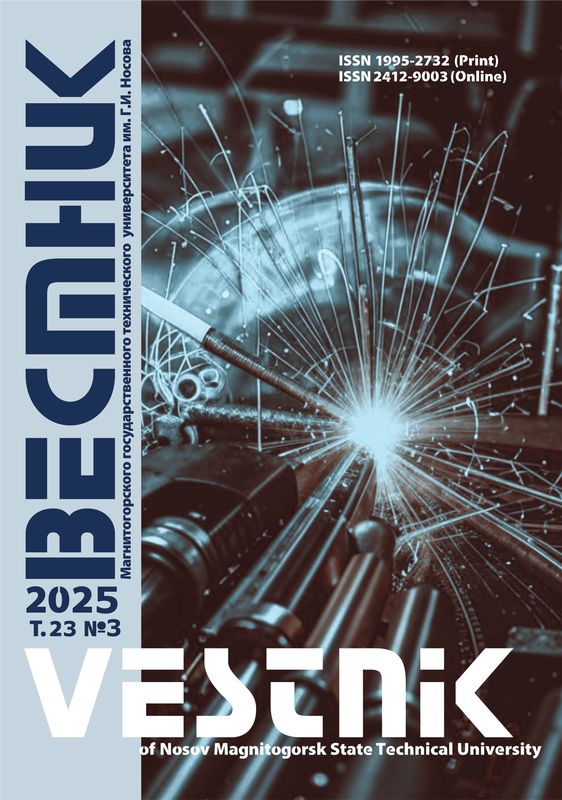DOI: 10.18503/1995-2732-2023-21-3-114-122
Abstract
Problem Statement (Relevance). Modern mechanical engineering is characterized by a constant tightening of requirements for accuracy of parts. One of the problems of achieving high accuracy of the axis of the holes in various parts is technological inheritance of errors during multi-transition processing. Hole machining on modern CNC machines by drilling, countersinking and broaching is carried out with a rigid attachment of the tool and without direction along a jig bushing. When applying multi-pass hole machining, the deviation occurred after drilling is to be corrected at the following stages. However, drilling, countersinking, etc. unstably provides an increase in accuracy of the location of the axis of the hole. The results of these stages are unstable; in some cases the deviation is not decreased, but increased. This is largely due to the main specifics of hole machining with end measuring tools (drills, countersinks, reamers), namely extremely low rigidity, which is almost impossible to increase on modern high-precision CNC equipment. Therefore, it is necessary to find other ways to reduce machining errors: the choice of geometric parameters of sharpening tools, factoring into the amplitude and phase of axial vibrations of the tool, etc. Objectives. The study is aimed at determining experimentally the influence of various machining process parameters on inheritance of the deviation of the hole axis for drilling and countersinking with a three-blade countersink. Methods Applied. We developed a method of conducting experiments with varying the angles of tool sharpening, the amplitude and phase of the axial vibrations of the tool, the azimuthal position of the workpiece in the machine. Originality. Certain combinations of controlled machining parameters have been found to provide that a dissymmetrically sharpened tool along the entering angle reduces the deviation of the hole axis significantly more than a symmetrically sharpened one. Result. It is possible to control the parameters of hole machining with end measuring tools to achieve a significant impact on technological inheritance of axis location errors. Practical Relevance. The application of the research results will improve accuracy of hole machining with end measuring tools on CNC machines.
Keywords
hole machining, technological inheritance, removal of the axis of the holes, end measuring tools, axial vibrations of the tool
For citation
Deryabin I.P., Guzeev V.I., Tokarev A.S. Experimental Studies on Technological Inheritance of Errors in the Location of the Axis of Holes when Using Three-Blade Tools. Vestnik Magnitogorskogo Gosudarstvennogo Tekhnicheskogo Universiteta im. G.I. Nosova [Vestnik of Nosov Magnitogorsk State Technical University]. 2023, vol. 21, no. 3, pp. 114-122. https://doi.org/10.18503/1995-2732-2023-21-3-114-122
1. Averchenkov V.I., Vasiliev A.S., Heifets M.L. Technological heredity in the formation of the quality of manufactured parts. Naukoemkie tekhnologii v mashinostroenii [Science-Intensive Technologies in Mechanical Engineering]. 2018;(10):27-32. (In Russ.)
2. Baranov A.V., Karachev A.V. Determination of technological heredity when machining holes in gas turbine engine parts. Vestnik mashinostroeniya [Bulletin of Mechanical Engineering]. 2021;(11):37-42. (In Russ.)
3. Gordeeva E.S., Bogutsky V.B., Shron L.B., Novoselov Yu.K. On the issue of factoring into technological heredity in the formation of properties of parts. Mekhaniki XXI veka [Mechanics of the 21st Century]. 2018;(17):248-254. (In Russ.)
4. Dalsky A.M., Bazarov B.M., Vasiliev A.S. Tekhnologicheskaya nasledstvennost v mashinostroitelnom proizvodstve [Technological heredity in machine-building production]. Moscow: Publishing House of Moscow Aviation Institute, 2000, 344 p. (In Russ.)
5. Deryabin I.P., Guzeev V.I., Kozharina O.A. Modeling the accuracy of multi-pass hole machining. Tekhnologiya mashinostroeniya [Technology of Mechanical Engineering]. 2007;(11):21-24. (In Russ.)
6. Deryabin I.P., Guzeev V.I., Kozharina O.A. Studies on inheritance of errors in the location of hole axes during multi-pass machining. Tekhnologiya mashinostroeniya [Technology of Mechanical Engineering]. 2008;(6):23-25. (In Russ.)
7. Emelyanov S.G., Zubkova O.S., Merzhoeva M.S. Efficiency of using prefabricated countersinks with replaceable multi-faceted plates. Vestnik mashinostroeniya [Bulletin of Mechanical Engineering]. 2003;(12):60-61. (In Russ.)
8. Zaitsev A.V., Kolupaev N.A. Methodology for calculating tool axis deviations when machining small diameter holes. Glavnyi mekhanik [Chief Mechanic]. 2020;(11):24-30. (In Russ.)
9. Rastorguev G.A. Features of technological inheritance in machine-building production. Inzhenernyi zhurnal [Engineering Journal]. 2013;(9(198)):8-17. (In Russ.)
10. Tokarev A.S., Deryabin I.P., Lopatin B.A. Experimental calculation of the deviation of the hole axis when machining with countersinks with multi-faceted disposable plates. Vestnik YuUrGU. Seriya «Mashinostroenie» [Bulletin of SUSU. Series: Mechanical Engineering]. 2020;20(1):55-62. (In Russ.)












